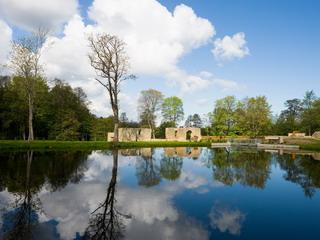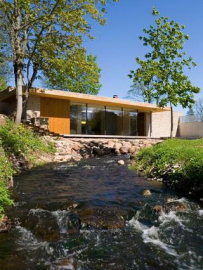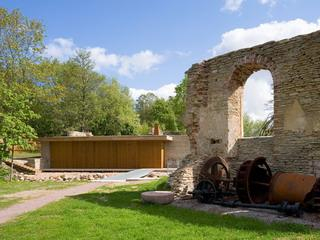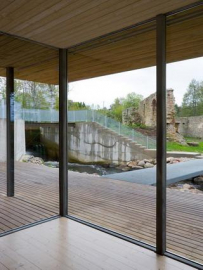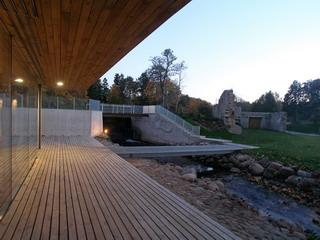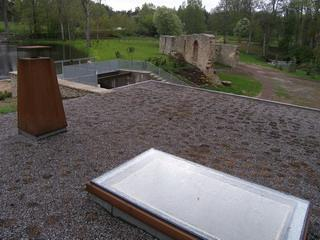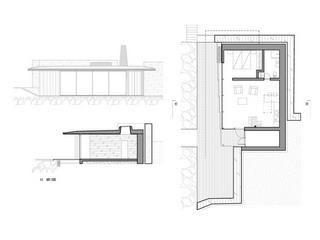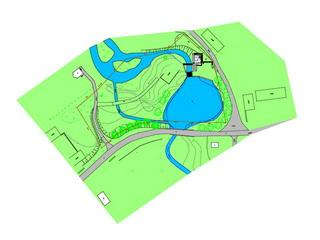Villa in Soorinna
Who is the stranger that has turned his back on the audience and grasps with his eyes all the playfulness nature has to offer in its honesty? What does he think and see and feel? And what does he do next? Caspar David Friedrichs "Wanderer Above a Sea of Fog" (1818) and John Constables "A Mill at Gillingham in Dorset" (1826) are romanticist paintings that create an unbelievably similar mood to the one dominant in the village of Soorinna near Kuusalu in Estonia, before the house was built here.
The place is like an ideal landscape, glowing with the closeness of forgotten nature and history, calling for rediscovery. The nature here is wider than anything else the reservoir, water falling and roaring, rapids with a little river island, warm evening sun, greenery, old walls
. Where is the line between nature and architecture? What is the right measure and balance between the two? It has been said that architecture begins where nature ends. But where does it begin? The house must give the answer.
The new house is lost in nature and amongst the old walls, surprising the viewer only when he gets closer. It is better that the new house cannot be seen from the Loo-Andineeme Road or elsewhere, except from its own area. Access to the one hectare area is not limited, but access to the house is difficult for a stranger to find. When arriving in front of the house, the nostalgia unexpectedly turns into modern sharpness.
By using the natural difference in heights, the roof surface of the house has been united with the plane of the reservoir and the road, the roof and ground are brought together by the greenery. Thus, the house is part of the landscape, one side of which is partially open from under the earths crust like a higher riverbank and of which the facade is formed, which opens toward the river and the sun from morning till sunset.
There is a covered terrace in front of the house between nature and the house, which grows into a bridge that takes you to the other riverbank. There is a glass surface between the room and the external area, which is covered with a wooden surface during the winter meaning sliding shutters with cracks in them for peeping. In winter, there is nothing but snow, limestone walls and the wooden wall.
In the duskier part of the interior area, light falls through the skylight. The existing limestone walls determine the use of level surfaces, which are energised by using different materials no material is preferred over another and there are both new and old materials together: concrete, natural wood, limestone, galvanized steel. In the former mill, there were iron shafts and gears, and a similar atmosphere is created by the ironmould chimney in the grass roof and the sides of the skylight.

